#lgbtq manga
Text
"Teenage Dirtbag" by "The Guy She Was Interested in Wasn't a Guy at All" Mangaka, Agu [Cleaned + Textless]
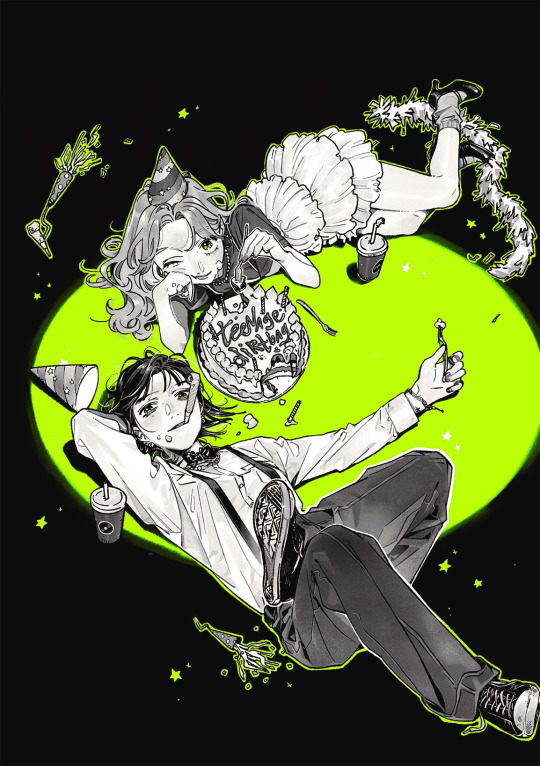
#Cleaned Manga#Manga#LGBTQ Manga#Yuri Manga#WLW Manga#The Guy She Was Interested in Wasn't a Guy at All#気になってる人が男じゃなかった
441 notes
·
View notes
Text
If you're asexual and enjoy yuri (girl's love) manga, please check out the manga series Doughnuts Under A Crescent Moon by Shio Usui. As a bi grey aroace person, I enjoyed it for the following reasons:
office love story starring two adult women, Hinako and Asashi
Hinako is a young woman plagued by self-doubt as she tries to use makeup and fashion to fit into the heteronormative expectations of her peers, as well as her mother hopes for her.
Asashi is a level-headed young woman who puts caring for her younger sister Subaru over her own wants and needs.
Hinako is the anxious lesbian character I never knew I needed
honest discussion of love and attraction through the metaphor of doughnuts, despite lacking the language of asexuality
The main leads start out as friends but grow closer through food, nail polish, getting to know each other, and improving their own lives
Great secondary cast including Asahi's witty and caring younger sister Subaru, Asashi's lesbian childhood friend Fuuka, and Hinako's mom (she starts off homophobic but comes around)

494 notes
·
View notes
Text
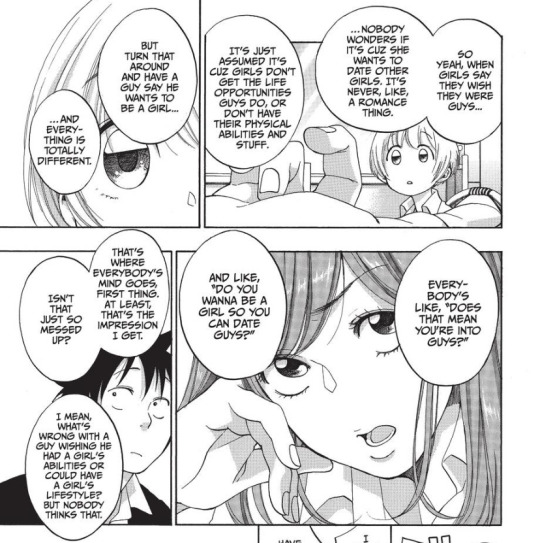
she was so real for this
374 notes
·
View notes
Text
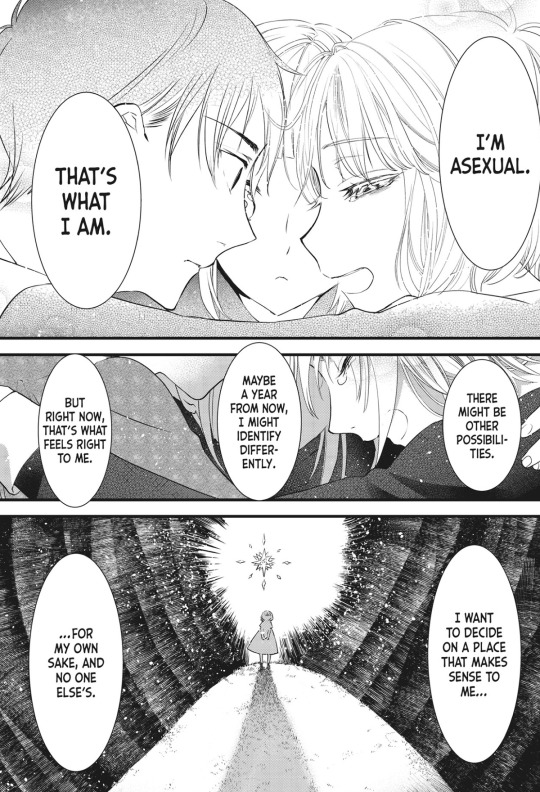
from Uta Isaki's asexual pride manga Is Love the Answer?
142 notes
·
View notes
Text
some queer manga centered around grief

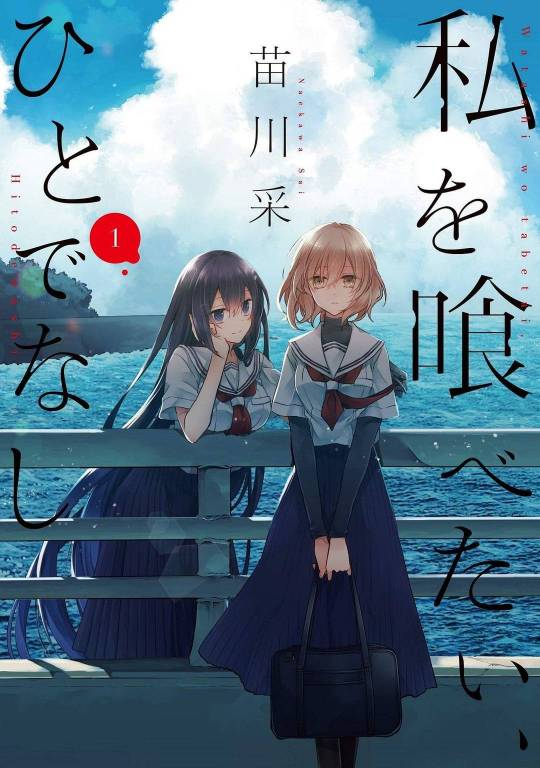
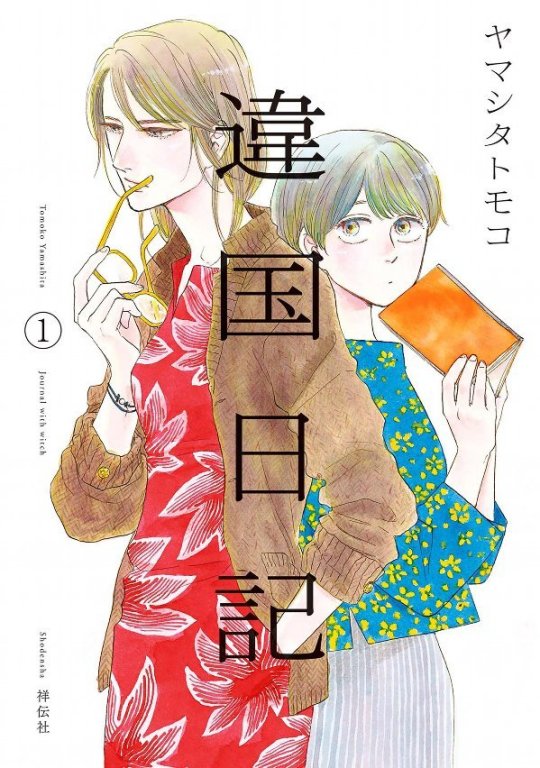

#composing spring in this room where cherry blossoms bloom#haru tsuzuru sakura saku kono heya de#this monster wants to eat me#watashi wo tabetai hitodenashi#ikoku nikki#hiraeth the end of the journey#hiraeth wa tabiji no hate#lgbt manga#lgbtq manga#queer manga#gl manga#yuri manga#queer themes#lgbt themes
20 notes
·
View notes
Text
With the recent boom of interest around dracula, i highly recommend reading one of my favorite retellings of the book: DRCL: Midnight Children by Shin'ichi Sakamoto (creator of Innocent and Innocent Rouge)

Genre: Mystery, Thriller, Coming-of-Age
Status: Ongoing
Content Warnings: Racism, Homophobia, Misogyny, typical Victorian England things in a private all-boys school
Instead of Jonathan Harker, it follows Wilhemina "Mina" Murray in Whitby School, a prestigious all-boys school. She's constantly bullied and looked down upon even if she's proven that she earned her spot on the school (Also she's a very good wrestler).

Other familiar characters such as Lucy Westenra, Arthur Holmwood, Quincey Morris, John Seward, and Bram Stoker also appear, albeit a bit different from the original.
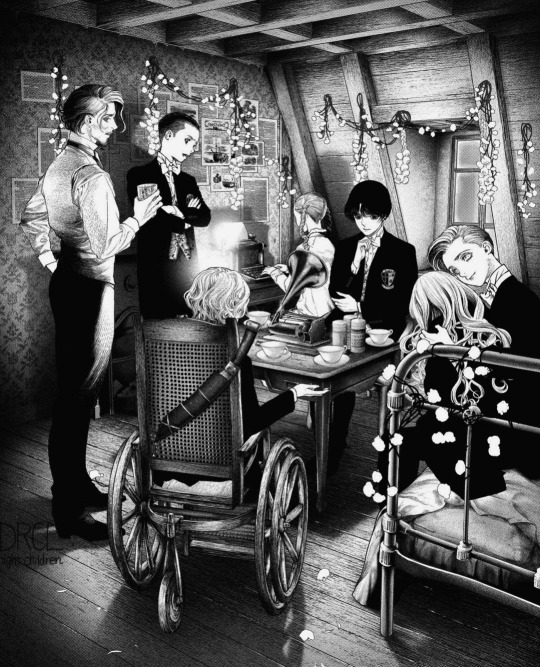
Sakamoto has changed a few things such as Quincey becoming an African-American student and John becoming Jo Sewa, who is now Japanese. Another change is Lucy is now Luke "Lucy" Westenra, though it's not currently clear if Luke/Lucy is genderfluid or a trans woman. Jonathan Harker is also changed as Mina's disabled childhood friend.

(And of course, they're all teenagers in an all-boys school)

Midnight Children is a completely different novel as a result of the modifications, yet it does follow most of Dracula's major plot points. Sakamoto's writing is excellent, and he creates a bleak, claustrophobia atmosphere right away, thanks to his realistic, nightmarish artwork.
Without giving too much away about the plot, I'll just mention Shin-ichi Sakamoto's art, which is rendered in an intimate, dream-like realism in every panel. Because all of the characters treat the unsettling, mystical forces surrounding them as normal, it does give a massive whiplash.



minor tangent: i like that the author doesn't go the tokenism route, which is such a low standard, but Sakamoto knows how to write queer characters. his writing in the Innocent series is enough to prove that. just a low standard but there's few stories that write their queer characters of color with respect, especially one based on Victorian England.
I recommend reading the one-shot first, then the manga. while it does spoil you a bit, the one-shot is a great mood-setter for the rest of the manga which is an amazing slow-burn.
#dracula#dracula daily#manga#drcl midnight children#manga reccomendation#horror manga#lgbtq manga#vampire#vampire manga#shinichi sakamoto#sakamoto shinichi#innocent manga#innocent rouge
454 notes
·
View notes
Text

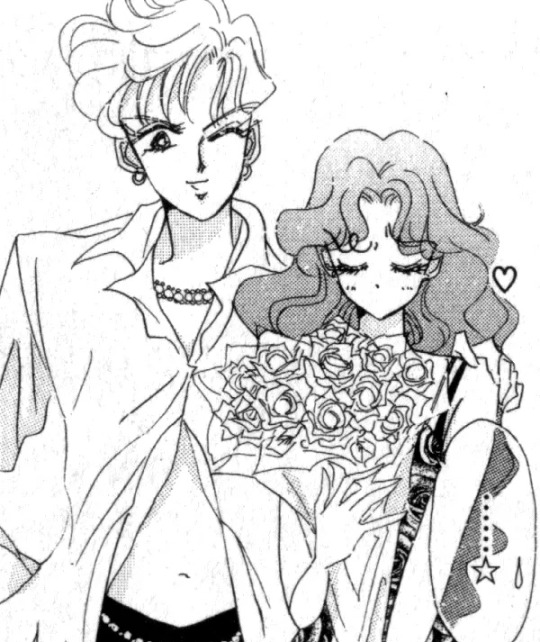

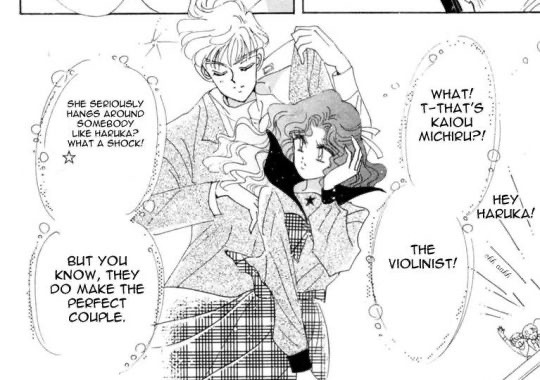
H a r u k a X M i c h i r u 🍵
#haruka x michiru#Haruka Tenoh#michiru Kaioh#lesbian#lgbtq#lgbtq anime#lgbtq manga#manga panels#queer manga#anime and manga#anime#manga#aesthetic anime#aesthetic manga#sailor moon#queer pride#pride!!!#lesbian pride#lesbian manga#Haruka Tenoh x michiru Kaioh#outer senshi#sailor moon aesthetic#aesthetic#sapphic#sapphic representation
222 notes
·
View notes
Text

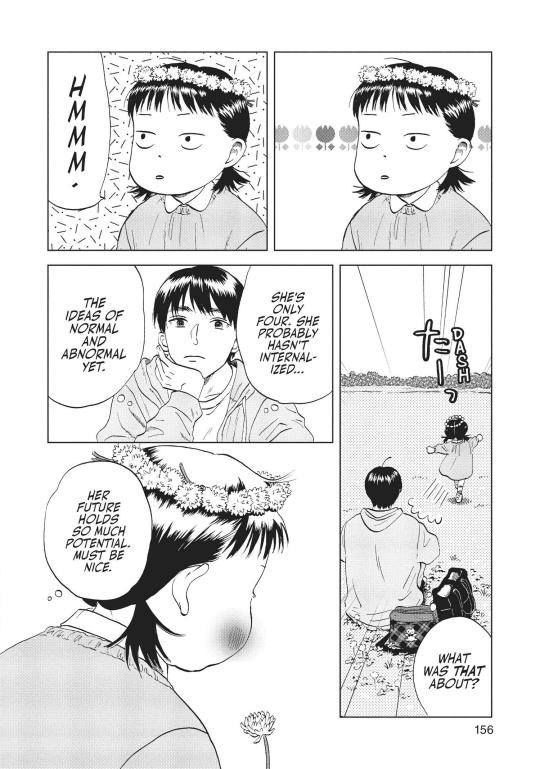

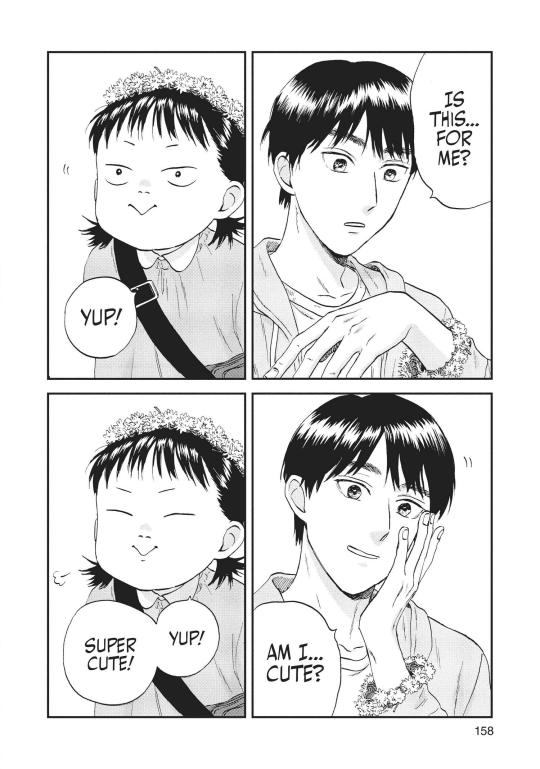

From 'Skip to Loafer'
I cannot tell yall how much I love the way this manga wrote Nao-chan. I can only show it through screencaps and hope some of you decide to read it too oTL
#manga#screencap#manga screencap#manga screenshots#anime / manga#manga panel#manga cap#manga crop#mangacap#skip to loafer#trans#trans woman#transgirl#trans manga#lgbtq#lgbtq manga
23 notes
·
View notes
Text

Manga: Bloom Into You
Written & Illustrated by: Nio Nakatani
#manga#manga screencap#manga blog#manga aesthetic#manga panels#artwork#black art#queer#lgbtq#bloom into you#gl manga#yuri manga#manga screenshots#romance manga#gay romance#manga art#mangacap#anime manga#queer manga#lgbtq manga
132 notes
·
View notes
Video
I CANT BREATHE HELPPP 💀
#jojo#jjba#jojo no kimyou na bouken#barnes and nobles??? explain#LGBTQ MANGA#I CANT#I LITERALLY CANT#ITS TRUE THOUGH?
244 notes
·
View notes
Text
LGBTQ Manga Review - X-Gender Volume 1
A challenging, complex, and intimate account of exploration outside the gender binary
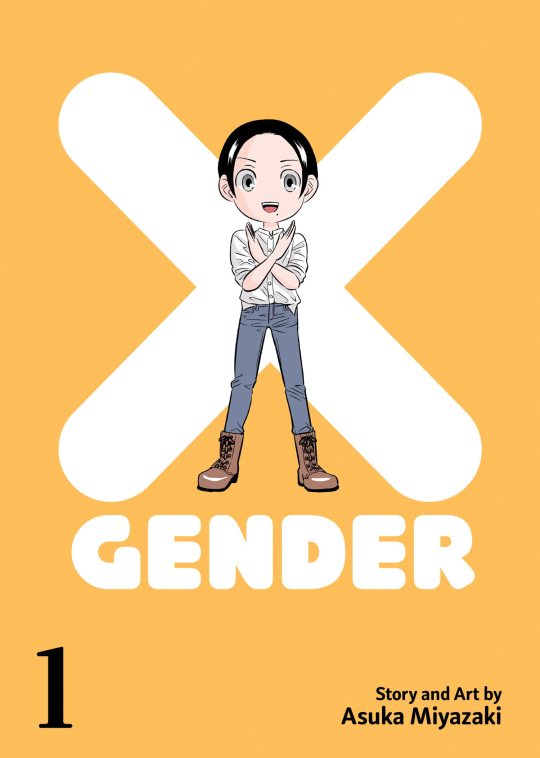
Autobiographical manga is astounding. Putting pen to paper and bearing the intimate details of one’s life is petrifying. And it is hard enough in prose, but the visual medium of manga adds another layer of complexity and exposure. I am so attracted to autobiographical essays for that reason, the experience of sharing in another’s struggles or understandings, whether I can empathize with them or not. As these works often catalog the lives of those living in marginalized or underrepresented communities, it is natural that LGBTQ+ life and identity would find a home within the genre.
These works are surprisingly varied. Many feature jubilant queer people celebrating their journey, like The Bride was a Boy, or a blissful account of sapphic cohabitation, such as Kyou mo Hitotsu Yane no Shita (which is desperately hope gets licensed). However, I gravitate towards those that depict more tragic circumstances, like My Lesbian Experience with Loneliness which offers an unadulterated and cutting view of the author’s struggles with queer identity and mental illness. X-Gender by Asuka Miyazaki falls into the latter category.

Warning X-Gender and this review contain adult themes, situations, and imagery that may be inappropriate or upsetting for some readers.
X-Gender follows the author, a 33-year-old person who, as the manga’s title implies, identifies as X-gender (a genderqueer identity that is essentially the Japanese equivalent of non-binary). At the start of the series, Miyazaki’s dearest friend, K, who they were clearly in love with, gets married and has a baby. Miyazaki has a complex attachment to K, and the sudden feelings of abandonment and befuddlement resulting from their shattered perception of K lead to a breakdown. In the midst of it, Miyazaki swears to find a woman and prove they can be happy too.

The introductory chapter introduces this catalysis that launches Miyazaki on their journey. The rest of the volume is a snapshot of different dating events and formative encounters with other queer people. These stories are often disjointed, save occasional references to the first two chapters. Thus, it is difficult to place events in context, which, to be fair, is not required of the autobiography, which exceptional recounts the author’s journey regardless. However, the structure irritatingly contrasts the framing devices used at the onset and conclusion of the volume. The experience is akin to reading the first and last page of a diary and a smattering of consequential entries in between.
These structural inconsistencies are a relatively minor flaw, thanks to the strength of the majority of chapters. Unfortunately, there are a few glaring defects. In the middle of the manga, there is effectively a one-page advertisement for the author’s other autobiography about their experience with OCD. And the tenth chapter is an incredibly irrelevant summary of Class-S literature (the genre from which modern Yuri evolved) and a doujin that reimagines the Little Mermaid as an S story. I personally would have loved this section (save the ghastly, neck-craning paragraphs of commentary crammed sideways into the margins) if it existed in isolation. Yet, such niche cultural references have no place in this manga. Thankfully, the manga's moving storytelling and vulnerable narrator more than eclipse this blunder.

X-Gender’s depictions of group dates and encounters with other LGBTQ+ people are lovely. Miyazaki masterfully integrates their own thoughts and narration into their accounts, with clever, quick cutaways and side stories to punctuate their point and contextualize their reasoning. These personal details synergize incredibly with the revelations Miyazaki comes to during each event.
Throughout X-Gender, Miyazaki and we learn about their own preferences and biases, for example, that they dislike flashy nails and smokers but enjoy fellow otaku and those that share their morose side. One of the comedic highpoints of the manga comes when Miyazaki realizes that their biggest deal-breaker is “a person with a positive outlook on life.” Like many of the jokes, it is tarnished by more tragic elements, in this case, Miyazaki continues to harbor feelings exclusively for K. These scenes create a well-rounded view of whom Miyazaki is as a person.

After reading, I genuinely feel that I understand the superficial details that make them unique: their sense of humor, tastes, and a keen eye for fashion. Given the short length of a single manga volume and the series focus on Miyazaki’s more intimate experiences, the fact that I feel as knowledgeable as an old friend is a testament to the strength of their voice on every single page.
A massive factor in Miyazaki’s incredible presence is their honesty. And while that trait serves them well in the more personal accounts, more on that in a moment, it also reveals some rougher edges. Miyazaki gives several comments which could be construed as ignorant at best and prejudicial at worst. For example, they make an overly generalized statement that women do not like dirty jokes. Furthermore, during one of the meetups, they discount the idea of dating a woman in her early twenties, saying that many women are interested in other women when they are younger but then get a boyfriend and start thinking about marriage.
In Miyazaki’s defense, their past with K informed these ideas. Furthermore, there are lingering ideas of transitory lesbianism in many cultures, and while many, especially those in the queer community, have evolved from these misconceptions, their damaging legacy lingers. Ultimately, I feel like I can give Miyazaki the benefit of the doubt as they are open about the fact that they are still learning and express enthusiasm for both learning from those of different minorities and challenging their own position. Still, these facts do not diminish the harmful impact of previously described dismissive and false statements.
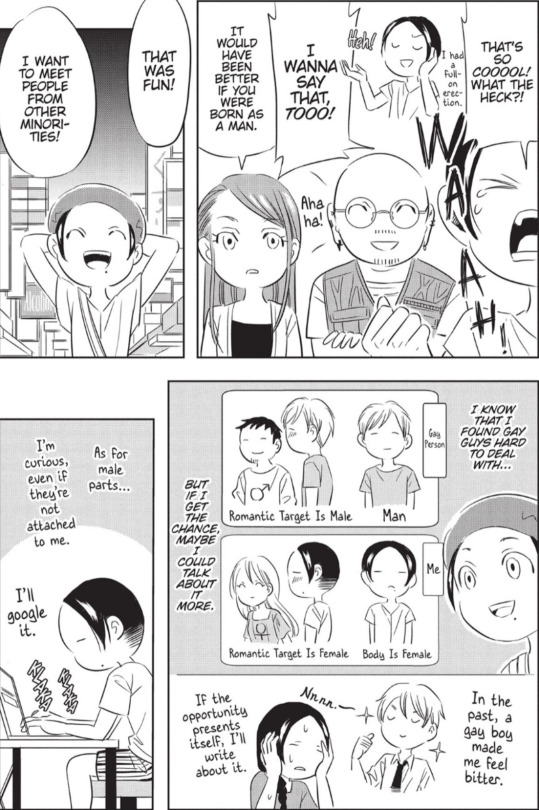
Few works can so effectively ignite and educate diverse audiences of outsiders, newcomers, and longtime veterans of queerness alike
Moving on, both during and between the dating events, Miyazaki recounts frequent conversations with other LGBTQ+ people. Many of these conversations and Miyazaki’s narration of their identity prelude more educational panels and pages that describe various aspects of LGBTQ+ life and identity. These range from lessons aimed at beginners, like defining different gender identities and sexualities, to the advanced content covering the terminology in lesbian relationships and the physical changes one may experience during hormone therapy.
No matter how niche these lessons get, Miyazaki breaks each down wonderfully, with clear explanations that are approachable yet still convey an astounding amount of nuance and detail required by intersectional conversations. The illustrations in these sections are the best in the volume, supplementing each point in an engaging and informative manner. It is worth noting that X-Gender was serialized in a Kodansha’s seinen Young Magazine the 3rd and may well have been one of many readers’ first formal educational exposures to queerness. For that, I commend both the manga and its creator.

However, Miyazaki’s most impactful moments are in the brilliant ways they describe their complex experiences with gender and sexuality. As an autobiography, X-Gender focuses on their relationship to the events within, which deftly convey their emotions, assisted by excellent visuals. It is a strange blend of forlorn sympathetic content, oddly humorous expressions, and quirky yet revealing expulsions- “Won’t somebody lend me a dick?” But, the impact is tremendous whichever way they communicate these exceptionally intimate feelings.

And Miyazaki’s willingness to discuss these often taboo topics, such as menstruation and pornography, in such a personal way establishes a profound connection to the author. X-Gender presents these topics and exposes their struggles with such earnestness that we share in their experiences. One feels Miyazaki's anxiety for their first meet-up event, sympathizes with their dysphoria, and shares the incongruous feelings they grapple with as the X-gender person attempts to find a place in lesbian spaces. Few works can so effectively ignite and educate diverse audiences of outsiders, newcomers, and longtime veterans of queerness alike.
In X-Gender, Miyazaki exposes themselves, creating a calculated discomfort that allows their unique blend of resonating storytelling and offbeat humor to land with precision. The manga is a balance of informative lessons on LGBTQ+ identity and admission of ignorance as it explores the topic alongside readers, falling at times but never wavering in its honesty. While the information and feelings the manga presents are incredibly accessible, it does not hold readers' hands but challenges them, relying on their strength to carry them through as Miyazaki courageously bares their soul and constructs a fragile scaffolding for a mightly fortress of empathy. If you are up to this daunting task, I assure you X-Gender is a manga worth reading.

Rating – 8/10
Check out X-Gender Volume 1 Today
Reading official releases helps support creators and publishers. YuriMother makes a small commission from sales to help fund future coverage.
Special thanks to translator Kathryn Henzler, Cae Hawksmoor, Vanessa Satone, H. Qi, Leighanna DeRouen, Dawn Davis, Jenn Grunigen, and the rest of the team at Seven Seas for their work on this manga.
This review is made possible by the support of Avery Riehl and the YuriMother patrons. Support YuriMother on Patreon today for exclusive articles, early access, and to help fund LGBTQ+ content.
#manga#reviews#lgbt#anime#lgbtq#lgbtq+#queer#gay#non-binary#nonbinary#trans#transgender#nblw#pride#pride month#lgbt manga#lgbtq manga#lgbt anime
210 notes
·
View notes
Text
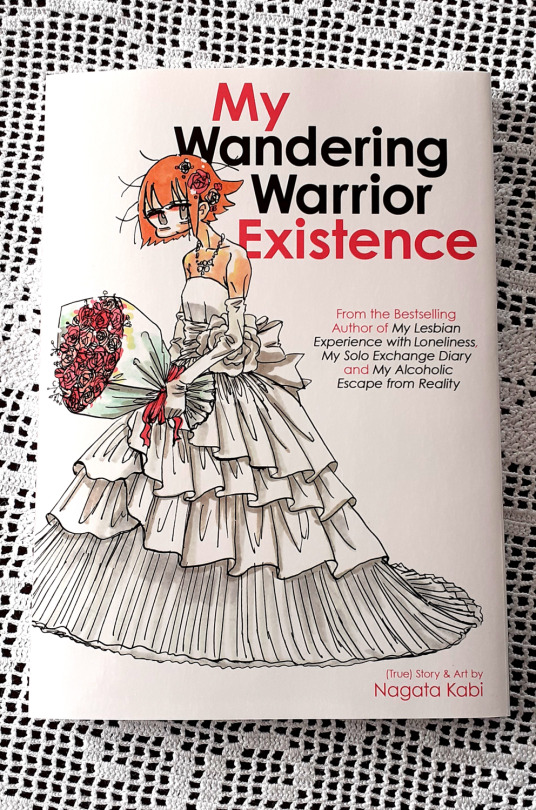
My Wondering Warrior Existence by Nagata Kabi
Warning: Spoilers
Trigger Warning: Mention of Sexual Abuse
When I saw the cover I freaked out: she (maybe ‘they’, the author’s not quite clear on this yet) couldn’t possibly be getting married, last I’d heard Nagata Kabi had written about recovering from alcoholism and had yet to have her first proper romantic relationship.
Turns out at the start of the manga Nagata had gone to a friend’s wedding and felt overwhelming joy at the general happiness of the event, leading her to want to experience the joy of a wedding, but without an actual marriage. Cue a specialist fake-wedding photo shoot, where you can hire a wedding dress and get your picture taken as a bride. Now for all of us more “clued in” we might think how silly, it is not a wedding dress or a party that creates that real feeling of happiness, the genuine feeling of love emitting from a couple and the pride their family feels. And yet how many of us are seduced by the glamour and dream-like nature of a wedding, ignoring relationship issues in favour of an opportunity to wear a wedding dress and have that ONE special day?
Perhaps a fake bride photo shoot isn’t silly at all, perhaps it’s genius, it’s genius for those that can separate their desire to wear a beautiful gown from those that have the main intention of legally cementing a relationship. Power to those that can see through the consumerist crap about romance and understand that what they are really finding attractive is the dress, the flowers, the engagement ring, the special day, and so on. Not the marriage, the everyday mundane relationship stuff.
Unfortunately, the author isn’t quite there in the understanding of all of the above, she starts off by believing that the photo shoot will bring similar happiness to that of a wedding with genuine love between the couple, friends and family, but it does not, then throughout the book she discovers that real love does exist, she thought it was all a collective illusion. A lot of confusion basically.
Now speaking from personal experience I have often wondered whether true romantic love really exists, and whether it can exist long-term, having no real examples of happy long relationships in my family, so like the author, who also comes from a family with unhappy couples, I can understand the questioning of the existence of real love. However while I’ve come to the conclusion that it can exist and long-term too, love simply takes many form throughout a couple’s life, Nagata Kabi on the other hand is still stuck on understanding that first stage of love, that intense attraction love. To her all the words of love songs, and love stories were assumed to be artificial.
There are other things I can identify with, like Nagata Kabi when I first set up an online dating profile in my early 20s, my profile was perhaps “too honest” in presenting my negative qualities, not to the extent that Nagata Kabi has gone to, but over the years I have seen a lot of profiles like that, of people who are insecure and feel the need to highlight everything that they feel is bad right at the start. It’s a sort of self-defence strategy; before you confront me with my failings, I’m going to list them all, and if you initial accept them then that’s resolved. Things aren’t like that, what we think as our worst failings are not necessarily what others are going to think are our worst faults. Nagata is taking a step forward in setting up an online dating profile, but taking two steps back by writing an overly negative profile of herself which she believes will discourage anyone from reaching out to her.
That’s point one. Point two is her surprise that people, lots of people did reply to her profile. Why? Because some people just want to get laid and don’t care if they like the other person or not. Because some people don’t really read the profiles and instead just send generic messages to everyone they come across. Because some people will read an insecure person’s profile and not take the issues seriously, imagining that the person is simply insecure, and with their help this insecure person will cheer right up. And lastly because some people do relate to what’s in the profile and genuinely think meeting up is worth a try.
The first third of the manga is relatable to me on a personal level. The second third is very sad to read, the author discusses being molested by a stranger as a child, and the attitudes of those around her that made her feel responsible for being a victim, in particular teachers using the assault year after year as a warning to other children, bringing it up in classrooms and assemblies. This is only described in about 5 pages but says a lot about it in a very straightforward way.
After that section there’s a lot of over-thinking about the nature of romantic relationships and the hurdles stopping the author from pursuing a relationship: lack of faith in people, trying to figure out what’s her type when she’s never really gone out with anyone, trying to figure out her gender, her sexual orientation and so on. While it’s good to think about these things, and this book will help a lot of like-minded people, thinking will only take you so far with certain things. For example 4 books after My Lesbian Experience with Loneliness (published 2016, My Wandering Warrior Existence published 2020), the author is still not sure what her sexual orientation is, now of course everyone is figuring themselves out at different speeds, the author does not owe us an answer about her sexuality, but perhaps instead of more thinking it might be helpful for Nagata to meet different types of people, to interact with them, spend time with them, and through social experience help figure out what her type or types are.
I think a good, honest thing that the author has done is to dedicate a chapter to a letter a reader wrote to her, it explains attraction and love, and since these are concepts that the author herself is working to understand she’s decided to simply share what this reader wrote to her. A lot of what is explained of love and romantic relationships can seem like common sense to the majority of us, but I’m sure there are a lot of people, perhaps who are autistic, neurodivergent or lack experience, or are asexual or many other things that I don’t yet know about, that will really appreciate this book, the explanations, and identify with the author’s struggles.
The manga does end with a few points that even the most ‘with it’ person often fails to realize, such as you need to love yourself first before you’re able to love others, if you bully yourself you learn that behaviour and you may end up bullying other people, be it a partner or even children and friends.
And then there’s the importance of children in a family, children bring joy to a family, as family members get older and grumpier, more disillusioned or tired with life, seeing children react with joy and wonder at all that is new to them can invigorate the mood of the family. As the author considers this and her guilt for not providing her parents with grandchildren I am grateful for her mother’s interjection: grandchildren don’t automatically fix everything. She gives an example of an acquaintance who doesn’t have a satisfying relationship with her grandson… and Nagata’s mother comments that a dog would be cuter than a grandchild. While that may seem shocking to some people, the thing to take away from that is that not every human is meant to be a parent, nor every parent makes a good grandparent.
The manga ends on a happy note, although to many it may seem like nothing much happened, and the revelations the author reached aren’t particularly special, and to me it did feel at the time like perhaps the book was written to stretch out the success of the previous books, but without much to say. It fares better on a second reading, for some of the reasons I’ve already discussed, it’s a good book and a comfort to those who find it difficult to understand love, relationships and attraction on a basic level, and it is a reminder to all of us that life is not lived out in the simple plot of a story, when an author writes something autobiographic we should not expect all issues to be neatly tied up, we should not expect for questions about the nature of love to automatically result in a marriage by the end of the book… or by the end of book 5.
Review by Book Hamster
#just finished reading#my wandering warrior existence#nagata kabi#my lesbian experience with loneliness#lgbtq manga#pride month#pride month books#manga#manga recommendation#reading blog
44 notes
·
View notes
Text

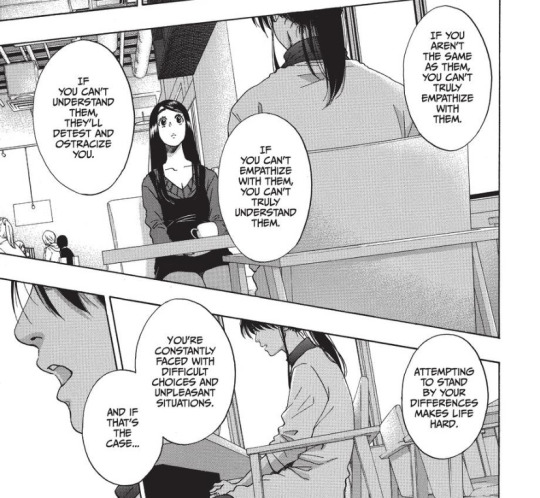


boy meets maria and ao no flag ; parallels
235 notes
·
View notes
Text
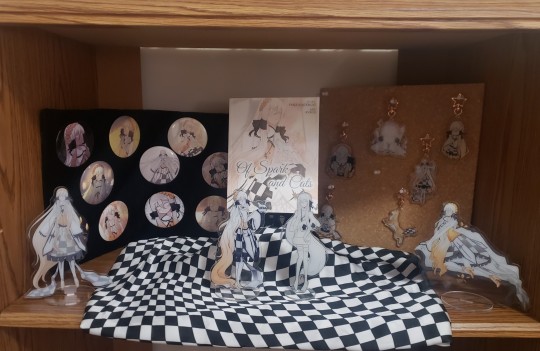
College classes ended early today for the weather after all, so I have been working on my manga display.
#remarkable how much space i have when the buttons and keychains are pinned upright#i added a box below the cloth to elevate the manga bc i really favor that look.#drawing#artists on tumblr#drawings#manga#anime#artist#mangaka#original character#rkgk#original character art#manga display#shoujo manga#mahou shoujo#magical girl manga#gl manga#lgbt manga#lgbtq manga#oc art#oc artist#oc drawing#oc#ocs#anime merch#keychains#acrylic standees#acrylic stand#of spark and cats#spark iskra
6 notes
·
View notes
Text




Current Reads
#mangacap#lgbtq manga#queer fiction#welcome back alice#boys abyss#eat manga#the summer hikaru died#i wont have sex with you for free
22 notes
·
View notes
Text
IK IT'S SUS LOOKIN, but literal definition of "don't judge a book by its cover" or title in this case. It's a beautiful story about 2 outcasts of society and how they're seen as dirty and it's prequel where a gay man doesn't want a boy to think he has two dads. Ugh the prequel brooo TT^TT
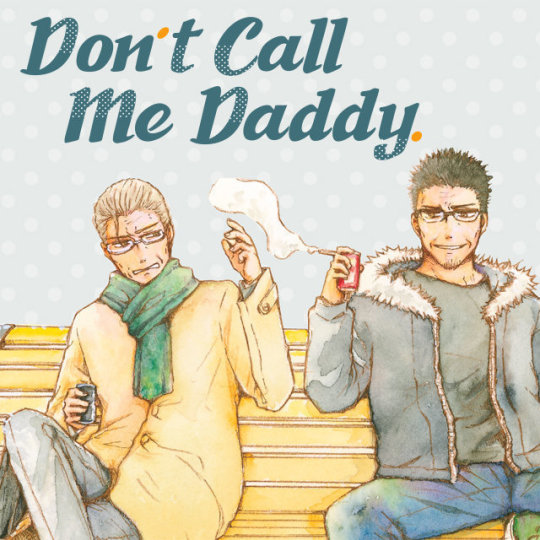

4 notes
·
View notes